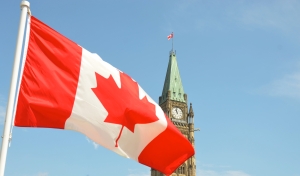Clean Energy Canada | Fall Economic Statement introduces much-needed clean energy tax credits
November 3, 2022

OTTAWA — Mark Zacharias, executive director at Clean Energy Canada, made the following statement in response to the federal government’s Fall Economic Statement:
“The global economy is changing. Clean energy is replacing fossil fuel energy, and the way in which nations are planning their economic futures is changing too.
“America’s new clean energy tax credits could catalyze climate spending in the country—both public and private—to the tune of US$1.7 trillion over 10 years. For scale, that’s nearly the entire annual GDP of Canada.
“Canada simply had to respond, and today’s Fall Economic Statement does just that. It’s a recognition of a global reality in which our largest trading partners are mapping out their clean industrial futures and planting flags.
“Accordingly, today’s statement provides more clarity and certainty regarding how Canada will respond to U.S. incentives in the Inflation Reduction Act. In particular, Canada’s 30% refundable tax credit for clean energy will apply to the capital costs of renewable power generation, energy storage, low-carbon heating and cooling equipment like heat pumps, and industrial zero-emission vehicles.
“Also worth noting is an increase to a previously announced investment tax credit for clean hydrogen—now 40% for the cleanest hydrogen—along with more details around how dollars in the $15 billion Canada Growth Fund will be used to foster Canadian clean energy innovation. As well, $250 million will be set aside for Employment and Social Development Canada to help Canadian workers sharpen their skills in a sustainable economy.
“The idea that climate action is also economic action has never been truer. We’ve had climate plans with economic benefits. This is economic planning with climate benefits.”
KEY FACTS
The Fall Economic Statement contained the following key clean energy and climate-related developments:
- A proposed refundable tax credit (first announced in Budget 2022) subject to labour requirements and equal to an investment of $6.7 billion over five years. The credit is equivalent to 30% of the capital cost of investments in:
- Electricity generation like wind, solar, small hydro power, and small modular nuclear reactors.
- Stationary electricity storage.
- Low-carbon heat equipment, like heat pumps and active solar heating.
- Industrial zero-emission vehicles and related charging or refuelling equipment.
- An investment tax credit (first announced in Budget 2022) to support clean hydrogen production. The proposed credit, subject to consultation, will be at least 40% for the cleanest production that meets labour requirements. The credit will be phased out after 2030.
- Further details on the Canada Growth Fund (announced in Budget 2022), which will use public funds to attract private capital using a suite of investment tools. The fund will have three areas of focus:
- Projects that use less mature technologies and processes (proven in pilots but not yet widely adopted) to reduce emissions across the Canadian economy like hydrogen, biofuels, and carbon capture, utilization, and storage.
- Tech companies scaling less mature technologies that are currently in the demonstration or commercialization stages of development.
- Companies and projects across low-carbon or climate tech value chains, including low-carbon natural resource development.
- $ billion over six years, starting in 2022-23, to go toward improving regulatory processes for major projects to help agencies “increase their capacity and improve the efficiency of assessments in order to respond to a growing number of major projects being proposed.”
- $962.2 million over eight years to modernize the National Research Council’s scientific infrastructure and help propel Canadian innovation.